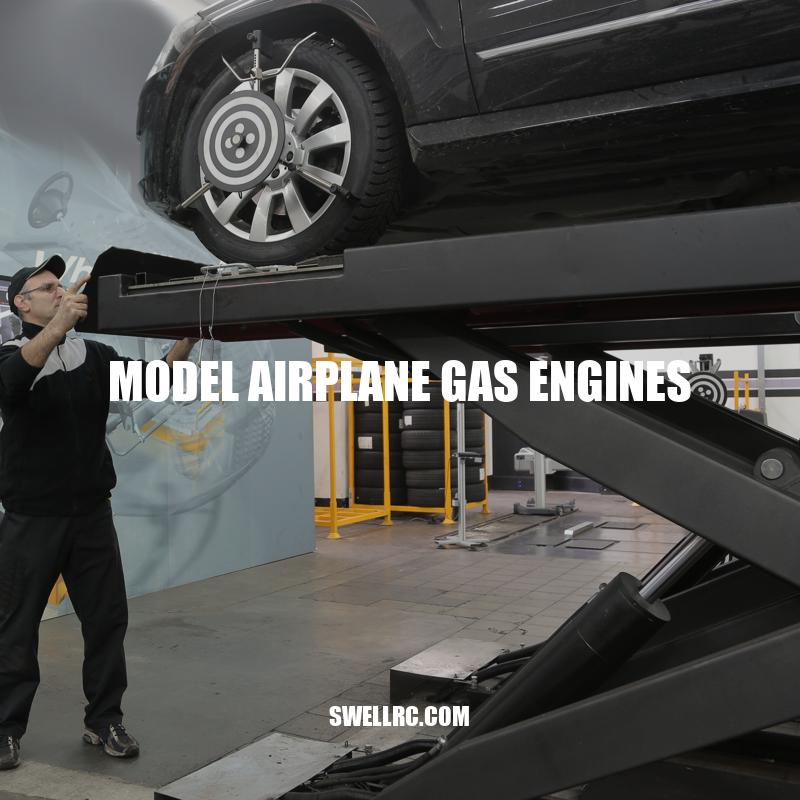Guide to Model Airplane Gas Engines: Powering Your Hobby Aircraft
Model airplane gas engines are miniature internal combustion engines that power small aircraft models made of plastic or wood. These engines are specifically designed to provide maximum power with minimum weight. They not only provide high power-to-weight ratio but also deliver smooth and reliable operation. They come in various sizes, ranging from a few cubic centimeters to several liters. Model airplane gas engines are the preferred choice of serious hobbyists who want to build complex aircraft models that can fly high and fast. The two-stroke engine is the most common type of model airplane engine. It is simple, lightweight, and provides high power output. It works on the principle of two piston strokes—intake-compression and power-exhaust. The fuel and air mixture is compressed in the cylinder, ignited by a spark plug, and expelled through the exhaust. The engine runs on a blend of methanol, oil, and nitromethane, which provide the necessary fuel and lubrication for the engine. The fuel mixture is usually stored in a small fuel tank connected to the engine by a fuel line. Model airplane gas engines require proper maintenance and tuning to ensure optimal performance. It is important to check the engine’s fuel and air mixture, spark plug, and exhaust system regularly. The engine must be run-in before use, which involves running it at low speeds for a short period to allow the parts to settle and lubricate properly. Model airplane engines also require careful tuning of the carburetor to adjust the air and fuel mixture to optimize performance. This involves adjusting the needle valve to control the fuel flow. Model airplane gas engines come in different sizes and types that can cater to a wide range of airplane models. The choice of engine depends on the size and weight of the plane, the flying style, and the preferred fuel mixture. Advanced hobbyists can even build their own engines from scratch by using specialized parts and tools. Many model airplane engine manufacturers offer online resources and support to help hobbyists choose the right engine for their needs.
Types of Model Airplane Gas Engines
- Two-stroke engines are the most common type of model airplane engine. They are simple, lightweight, and provide high power output.
- Four-stroke engines are larger and heavier than two-stroke engines but provide better fuel efficiency and more precise control.
- Diesel engines use a compression ignition system that burns a mixture of methanol, ether, and castor oil and are known for their smooth running and longevity.
- Glow plug engines use a heating element to ignite the fuel and air mixture, which provides a reliable and easy starting mechanism.
- Gasoline engines are becoming more popular due to their lower cost and ease of use. They are similar to two-stroke engines but use gasoline instead of nitromethane.
Model airplane gas engines come in different sizes, types, and colors to cater to the preferences of hobbyists. Several manufacturers produce model airplane gas engines, including OS Engines, Saito Engines, and Evolution Engines. These companies also offer a variety of accessories, including propellers, mufflers, and fuel tanks. Hobbyists can purchase model airplane gas engines and accessories online through various retail websites such as HobbyKing, Tower Hobbies, and Horizon Hobby. These websites offer a vast selection of model airplane gas engines and accessories to cater to the needs and preferences of hobbyists of all skill levels.
What are some popular manufacturers of model airplane gas engines and accessories?
Some popular manufacturers of model airplane gas engines and accessories include DLE Engines, OS Engines, Saito Engines, and Evolution Engines.
Maintenance and Tuning of Model Airplane Gas Engines
- Check fuel and air mixture regularly
- Inspect spark plug and replace if damaged or worn
- Clean the engine and exhaust system periodically using an appropriate cleaning solution
- Use a fuel filter to prevent debris from entering the fuel line and carburetor
- Warm up the engine before flying by running it for a few minutes at low speeds
- Carefully tune the carburetor to adjust the air and fuel mixture to optimize performance
To help hobbyists maintain and tune their model airplane gas engines, several resources and tools are available online, such as tutorials, videos, and forums. For instance, HobbyKing offers a wide range of engine tuning tools, including carburetor adjustment screwdrivers, fuel mixture measuring cups, and engine break-in oils. The following table summarizes some of the basic maintenance and tuning procedures for model airplane gas engines.
| Procedure | Frequency | Tools Required |
|---|---|---|
| Check fuel and air mixture | Before every flight | Fuel mixture measuring cup |
| Inspect spark plug | Every 25 flights or as needed | Spark plug wrench and replacement spark plugs |
| Clean engine and exhaust system | As needed | Engine cleaner and exhaust pipe cleaners |
| Use fuel filter | As needed | Fuel filter and replacement filters |
| Warm up engine | Before every flight | Fuel pump and starter battery |
| Tune carburetor | As needed | Carburetor adjustment screwdriver and tachometer |
By following these maintenance and tuning procedures, hobbyists can ensure that their model airplane gas engines perform at their best and have a longer lifespan. Proper maintenance and tuning also ensure safer flying experiences and prevent costly repairs or replacements.
What resources and tools are available online to help hobbyists maintain and tune their model airplane gas engines?
There are several online resources and tools available for hobbyists to maintain and tune their model airplane gas engines, including user manuals, video tutorials, online forums, and diagnostic tools.
Choosing the Right Model Airplane Gas Engine
Choosing the right model airplane gas engine is a critical decision that can impact the performance and safety of your aircraft model. Hobbyists must consider several factors when selecting an engine, such as airplane size, flying style, fuel mixture, and budget. Websites like Tower Hobbies offer a range of model airplane gas engines from various brands like Saito, 3W, O.S., and Evolution. They provide detailed specifications, customer reviews, and expert advice to help customers make an informed decision. Additionally, manufacturers like Zenoah and SuperTigre offer online resources and customer support to help hobbyists choose and maintain their model airplane gas engines. With the right research and selection, hobbyists can enjoy a smooth and powerful flying experience with their model airplane gas engines.
To choose the right model airplane gas engine, one must first determine the size and weight of the airplane model. Then, the flying style, such as aerobatics or endurance flying, should be considered. Next, hobbyists must choose an engine that matches the fuel mixture and octane rating recommended by the manufacturer. It is always beneficial to consult with an experienced hobbyist or online forums for recommendations.
When selecting a model airplane gas engine, one must also consider the brand reputation and customer support offered by the manufacturer. Comparing prices and features of different engines is also essential.
| Brand | Link |
| Saito | https://www.towerhobbies.com/store/manufacturer/saito/power-systems/engine-and-engine-accessories |
| 3W | https://www.towerhobbies.com/store/manufacturer/3w/power-systems/engine-and-engine-accessories |
| O.S. | https://www.towerhobbies.com/store/manufacturer/o.s.-engines/power-systems/engine-and-engine-accessories |
| Evolution | https://www.towerhobbies.com/store/manufacturer/evolution/power-systems/engine-and-engine-accessories |
What factors should hobbyists consider when selecting a model airplane gas engine?
Hobbyists should consider factors such as power output, engine size, fuel efficiency, ease of maintenance, and compatibility with the airplane’s design when selecting a model airplane gas engine.
The Future of Model Airplane Gas Engines
The popularity and demand for model airplane gas engines have been steadily increasing over the years, as more people become interested in this hobby. With advancements in technology, it is expected that model airplane gas engines will become more efficient, powerful, and eco-friendly in the future.
One potential area of technological advancement is in the development of more efficient fuel mixtures that can provide higher power output while reducing emissions and environmental impact. Innovations in materials and manufacturing techniques may also lead to lighter and more durable engines that can withstand high speeds and extreme conditions.
Another trend in the hobby is the integration of digital technology in model airplane gas engines. Some manufacturers are already developing engines that can be controlled and monitored using a smartphone app. These engines can provide real-time data on RPM, temperature, and fuel consumption, making it easier for hobbyists to tune and maintain their engines.
In conclusion, model airplane gas engines are a vital component of the model aircraft hobby, providing the power and performance needed to fly small and complex models. With continued advancements in technology and innovation, it is sure that model airplane gas engines will continue to evolve and improve. With the right care and maintenance, these engines provide hours of fun and entertainment for hobbyists of all levels.



